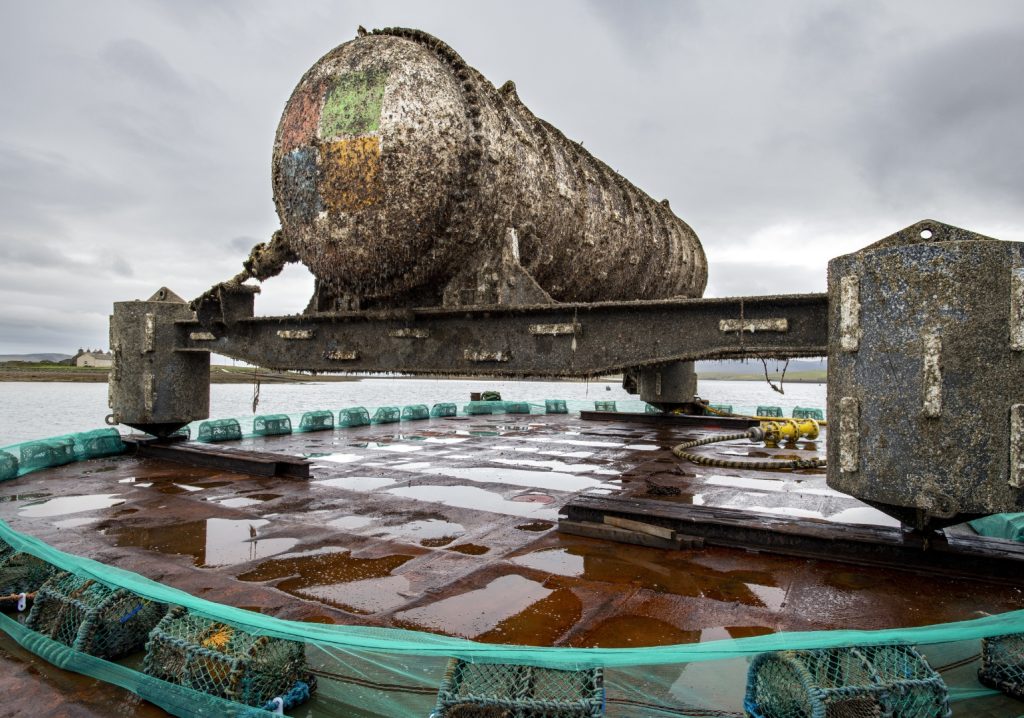Data centres located under the ocean depths could help improve efficiency and, for populations living along the coast, help solve the issue of latency.
From 2018-2020, marine life on the seabed near the Orkney Islands in Scotland had some rather unusual company.
Microsoft’s Project Natick team had placed a data centre on the seabed, 36 m below the surface, to assess if a sealed container could help improve the centre’s reliability. Land-based data centres are adversely affected by corrosion, temperature fluctuations, humidity and human interference, all of which can cause the equipment to fail.
Project Natick’s 12 m-long data centre, called Northern Isles, holds 12 racks containing a total of 864 servers, 27.6 PB of disks and associated cooling infrastructure.

Data centres require a great deal of water to keep the servers cool. A recent study by the University of Colorado Riverside and the University of Texas Arlington estimated that ChatGPT consumes the equivalent of 500 ml of water for a simple conversation of 20-50 questions and answers.
Given the millions of ChatGPT users, the water usage is significant, so natural undersea cooling has its benefits.
The idea emerged from Microsoft’s moonshot projects initiative. The team included Sean James, a US Navy veteran who worked on submarines for three years.
“I had no idea how receptive people would be to the idea. It’s blown me away,” James said in a post on the Microsoft website. “What helped me bridge the gap between data centres and underwater is that I’d seen how you can put sophisticated electronics under water, and keep it shielded from saltwater. It goes through a very rigorous testing and design process.”
Not surprisingly, the project uses heat-exchange plumbing – such as that found on submarines – with one big difference. The Northern Isles capsule is filled with nitrogen, not oxygenated air, as it is less corrosive and helps the servers deteriorate less over time.
Northern Isles, located at the European Marine Energy Centre, examined the viability of operating data centre units that come prepackaged and can be deployed quickly, before being left to operate for years on the seabed.
Increased power
With more than half the world’s population living within 200 km of a coastline, undersea data centres also help solve the issue of latency. Computer and storage infrastructure must be as close as possible to end users and other data sources, so users won’t have to move their data far to use it.
This is particularly critical in applications requiring low latency such as connected vehicles and high-frequency trading.
In a lights-out data centre such as Northern Isles, all servers would be swapped out about once every five years and the few that fail early are taken offline.
“We have been able to run really well on what most land-based data centres consider an unreliable grid,” Spencer Fowers, an electrical and computer engineer with Microsoft’s Special Projects research group, noted.
“We are hopeful that we can look at our findings and [realise] we don’t need to have quite as much infrastructure focused on power and reliability.”
The company is going down the path of finding ways to do this for land data centres.
“We continue to use Project Natick as a research platform to explore, test and validate new concepts around data centre reliability and sustainability, for example with liquid immersion,” a Microsoft spokesperson told create.
The project has demonstrated that data centres can be operated and kept cool without tapping freshwater resources. According to Microsoft, underwater data centres could also act as joint locations for offshore wind farms or tidal turbines.
A global lens
Meanwhile, 9400 km away off the coast of Hainan Island, China is building the world’s largest underwater data centre. China Offshore Oil Engineering is collaborating with Highlander to build data modules networked on the sea bed.
Highlander claims each of its modules can process more than four million high-definition images within 30 seconds, equivalent to 60,000 traditional computers working simultaneously. It plans to eventually deploy 100 such modules at the site, which it says would save 68,000 m2 of land, along with 122 million kWh of electricity and 105,000 t of freshwater per year.
Undersea data centres may make economic sense and trials are still underway. The world’s oceans at depth are consistently cold, offering ready and free access to cooling, which is one of the biggest costs for land-based data centres, according to Microsoft.
Explore more innovative ways of reducing carbon emissions at Engineers Australia’s Climate Smart Engineering 2024 conference in November.
